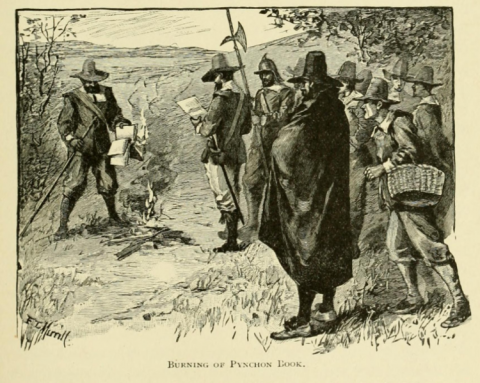In his (mostly) weekly mailbag post, Severian at Founding Questions considers the latest NFL scandal and some of the insane requirements to be a really great NFL quarterback and how few can both play and coach at that high level. First, the Romney Rule scandal:
I see that some black coach has sued the NFL for racial discrimination, and I must say I hope he takes them for every cent they’ve got. From the very little I’ve seen, his case is airtight, because of the NFL’s astounding stupidity. For those who don’t know, the NFL has been using what’s called the “Rooney Rule” for at least two decades now. This states that whenever a head coaching job comes up, the team must interview at least one (and I think two are mandatory now) black candidate.
Since there’s a serious dearth of black coaches at all levels of organized football (we’ll psircle back to that in a minute), this means that the same three or four guys go through the same pro forma interviews every time. As far as I understand it, then (which is not very, admittedly), this particular coach was actually told to his face that this interview with whatever team was just pro forma compliance with the Rooney Rule; we’ve already got our guy, so just fly out here, we’ll buy you lunch, have a nice chat, and put you back on the plane lickety split.
That’s one part of his airtight case. The other is that whatever team he interviewed with also has a Diversity and Inclusion Officer — because of course they do — and the DIE Officer is on record as saying all kinds of typical sanctimonious virtue-signaling shit, e.g. “We are a systemically racist organization and have to do better,” blah blah blah. Put those together, and what else can you conclude except that this coach got screwed out of a job because of explicit racial animus?
But as to why there are so few black NFL coaches, part of it is due to the way young quarterbacks are trained — he discussed this in detail here — which very frequently diverts talented young black quarterbacks away from learning the skillset they would need to make it in the NFL. The other thing is that the skills you need to be a good coach don’t often appear in a person who has the physical ability to be a good player:
If you haven’t met any high-caliber pro athletes, think of professors. The third-rate knockoff cow college I went to had a pretty big league chemist on staff; if he hadn’t won the Nobel he was at least in the conversation, something like that. This guy was a terrible teacher, because he just couldn’t grok that other people couldn’t follow him. Your brain couldn’t fire fast enough to keep up with his, and he couldn’t slow his down enough to let you catch up. The best chemistry teacher was still pretty smart — no dummies in Chem PhD programs, at least not back then — but because he was nowhere near the top guy’s level, he was so much better at explaining the nuts and bolts.
You could ask the low-end guy “What do I need to do to get better at chemistry?” and he could give you some solid, practical advice (I know, because with his help I squeaked out a C-). You asked that of the high end guy, and he’d reply “Be smarter”. (Not really, he was actually pretty cool, personally, but nonetheless that’s really all he could say).
Sports works the same way. While I was there, this same college also hired a former NBA player to coach basketball. Not a Hall of Famer, but a Hall of the Pretty Good-er; if you know basketball from the late 70s, you’ve heard of him. They thought having this guy as a coach would boost recruiting and ticket sales (he was a local notable, too), and it did … for a time, but under his stewardship the team got much worse, and for the same reason the Nobel-candidate chem wiz was the worst teacher. Billy Bigshot would tell his guys “Just go out there and do this and that” … but his guys couldn’t do this and that. Billy could, which is why he was a very good player at the highest professional level; but he couldn’t grok that not everyone could do the same genetic freak shit on the court he could, because they weren’t genetic freaks like him.
Psircling back to the NFL, if you want a race-neutral entry point for discussing this stuff, there you go. Good players are generally terrible coaches, because pretty much by definition good players are genetic freaks who have no idea how they do the things they do; they just do them. Good coaches, on the other hand, tend to be nerdlingers with people skills … another fairly rare combo, it must be said, but nowhere near as rare as a 6’4″ chess master with a big arm. If pro teams really wanted to start thinking outside the box, they’d start recruiting potential coaching candidates at video game tournaments … or straight from high school, where guys have to do much more with much, much less.











